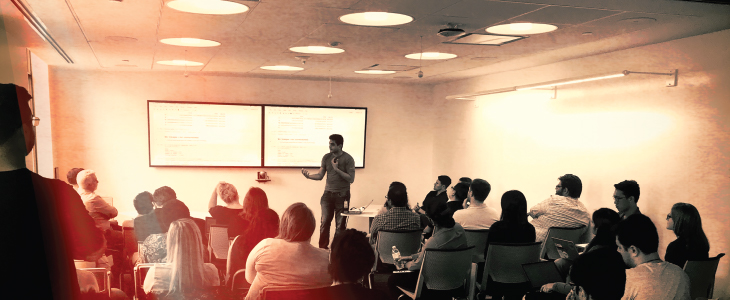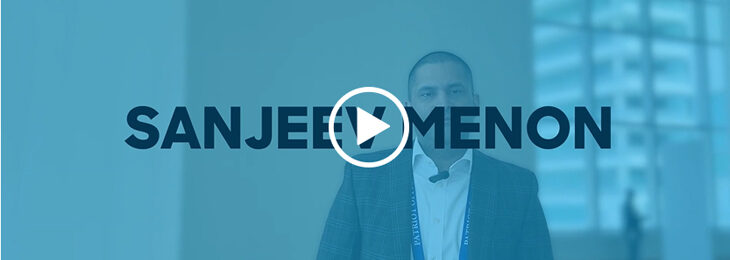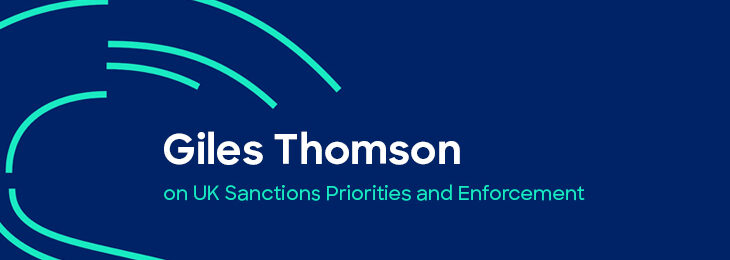
In today’s society, everything happens quickly. What is current one minute has the potential to become obsolete the next. Nowhere is this sentiment truer than it is for criminals and their ever-evolving tactics to stay one-step ahead of law enforcement (LE). In the human trafficking (HT) arena, where cruelty knows no bounds and criminals have the latitude to roam free, there is no rulebook. It is not an even playing field, and only one side is playing by the rules. Fortunately, the majority of society is on the defense with this issue, aligned with bringing down the few who choose to drive such evil. Small forces have the capacity to elicit real change in this space—that is what happened when a bank and a nonprofit joined forces to challenge the status quo and tackle HT with a powerful combination of passion and innovation.
For years, financial institutions (FIs) and LE have leveraged the power of their partnerships to share information that disrupts the elusive and ever-changing HT market, which the International Labor Organization estimates to be a $150 billion industry worldwide. Historically, this information sharing has led to the development of transaction-based rules for banks focused on money movement patterns and traditional HT red flags such as excess hotel, taxi and travel expenses. The issue with this approach is that the red flags are far too broad to detect activity across such a large and continuously evolving criminal industry. More targeted red flags means fewer false positives for banks and less time for criminals to prosper.
Polaris Project is the largest nonprofit agency leading the charge against HT, using data-driven strategies to support trafficking victims. Capital One is a leading FI that is actively working to achieve the same in the world of banking, disrupting the massive HT industry with innovation and design-thinking principles.
Having experienced the inefficiencies of the system firsthand, Capital One and Polaris saw the need for change in this space and answered the call to action, breaking the mold and bridging the gap between FI/LE relationships to include the nongovernmental organization (NGO) sector.
Capital One and Polaris have been building a relationship after making a connection at the 2017 ACAMS-Human Trafficking Financial Typologies Round Table hosted by Polaris. This event proved to be a catalyst for change, as the two organizations vowed not to stop the conversation there, but to continue working collaboratively to inform, educate, and combat HT together.
The Build-Up
After the roundtable, the two organizations identified the need for further discussions to share insights and looked for innovative ways to problem solve—thus, the concept for a hackathon came to life. Capital One analysts, machine learning engineers, and anti-money laundering (AML) investigators would partner with Polaris analysts and HT subject-matter experts to form teams that would tackle unique HT issues. These dynamic, cross-functional groups would be dubbed fusion cells.
Before the hackathon, mission-critical data was carefully shared between the previously siloed organizations with data privacy and sensitivity being a top priority. How did they make this work? Trust, communication and perseverance.
The day was successful thanks to the Polaris team being familiarized with the information and data FI’s AML programs have access to and thanks to information sharing across organizations. Capital One sent representatives to Polaris’ headquarters to do a deep dive into the Capital One AML program—core AML principles, investigator thought processes and techniques, readily available data and how that data could be used. Likewise, Capital One harnessed typology and modern HT red flag information from Polaris, socialized it with Capital One AML experts and decoded the bank’s data into something meaningful and shareable.
Once the organizations were familiar with what type of data would be available, they worked together to preemptively develop targeted ideas and recommendations. For the first time, FI data, machine learning, AML knowledge, LE guidance and NGO subject-matter expertise combined to form a holistic dataset, maximizing creative and integrative problem solving.
For the first time, FI data, machine learning, AML knowledge, LE guidance and NGO subject-matter expertise combined to form a holistic data set, maximizing creative and integrative problem solving
With all the data accounted for, Capital One and Polaris selected four use cases/problem statements as a
springboard to work from on the day of the event. The major HT typologies included illicit massage businesses,
labor trafficking, sex trafficking and Central America organized crime, and online sex advertising. The respective
problem statements were as follows:
- Some massage businesses illicitly provide sexual services, and these activities are usually associated with HT activity. How can these businesses be better identified?
- Suspicious activity report filings for HT are dominated by sex trafficking cases. However, labor trafficking forms a significant portion of overall HT cases. What information is missing? How can labor trafficking be better identified on a consistent basis?
- A significant pipeline of HT exists between Mexico and the U.S. How can humans being trafficked via this route be identified?
- Although the FBI shut down Backpage in April 2018, online advertising is likely still occurring. Where has it moved? How can this activity be identified?
Hacking the Day Away
On October 10, 2018, the HT hackathon vision came to life and the fusion cells were born. Capital One and Polaris met under one roof in the nation’s capital for the first-ever fusion cell approach of its kind. Blended teams self-selected based on interests and expertise, aligned with one problem statement and hit the ground running.
The power of the fusion cell was evident immediately as machine learning engineers, lawyers, business analysts,
AML investigators, data scientists, HT experts and former federal LE wasted no time harnessing the value of their
combined perspectives, skillsets and diverse backgrounds to develop new AML insights into the complex world of modern-day HT.
Marrying the two approaches of using transaction-based rules and focusing on specific criminal behavior resulted in broader generalized rule sets with new rules focused on predicate crime. This data had never before been shared across parties. Bringing these previously independent entities together resulted in some truly groundbreaking work.
Innovation Yields Big Results
These more focused and relevant rules yielded immediate results. One team looked at illicit massage business rings and their middle men, another looked at labor trafficking through large cash deposits and high volumes of travel visas, and another looked at online merchants similar to Backpage. A connection was made between customers
who post excessive bail bonds and their involvement in sex trafficking. The team responsible for identifying this
bail bond link quickly flagged upward of 500 accounts based on an algorithm of the number of bond payments in a year and their association with HT. Some of these yearly totals were in the hundreds of thousands of dollars and
were associated with “spa” businesses, or other business fronts often associated with HT.
The new red flags and risk indicators that were discovered during the session have since been shared across both organizations. The red flags are of particular value to the financial intelligence unit within Capital One’s AML
program and have been used to inform the team of new suspicious activity trends, further improving and fine-tuning investigator training.
Keeping Up the Momentum
Not only was the hackathon mutually beneficial and an immediate value addition to both Polaris and Capital One, but the ongoing collaboration and information sharing between the groups has yielded new perspectives into various HT typologies such as merchant and escort sites.
This innovative interaction model and the insights gleaned from it can be shared with other NGOs and FIs to continue making progress against this massive humanitarian crisis—starting with this conversation. Using a roadmap similar to the one developed by Capital One and Polaris will ideally help other FIs replicate similar sessions with tremendous impact.
With this hackathon representing the undisputed power of innovative thinking paired with diversity, the Capital
One/Polaris partnership begs the question—what else is possible?










